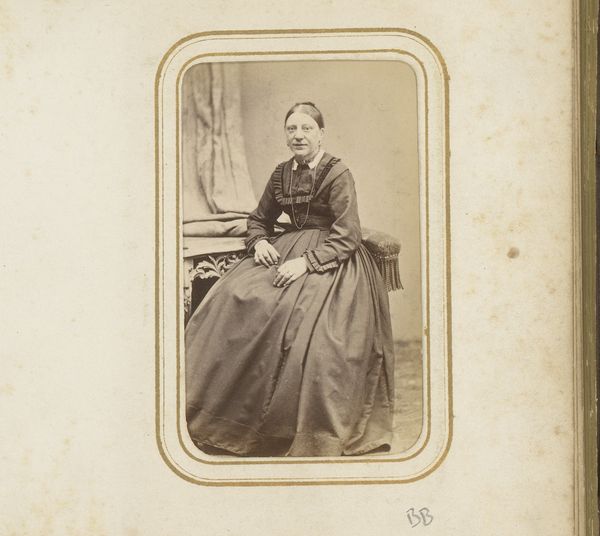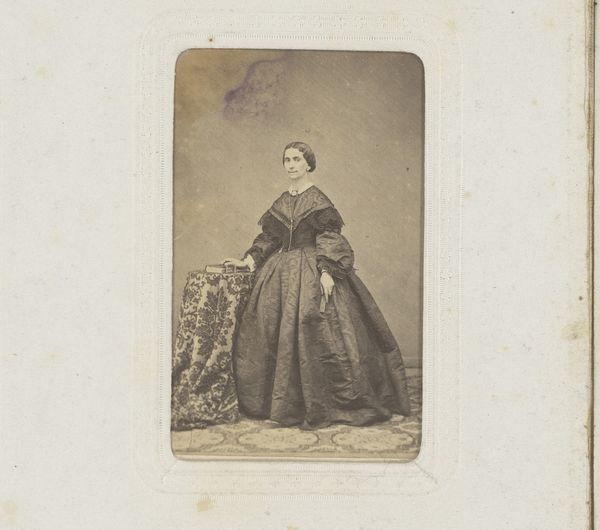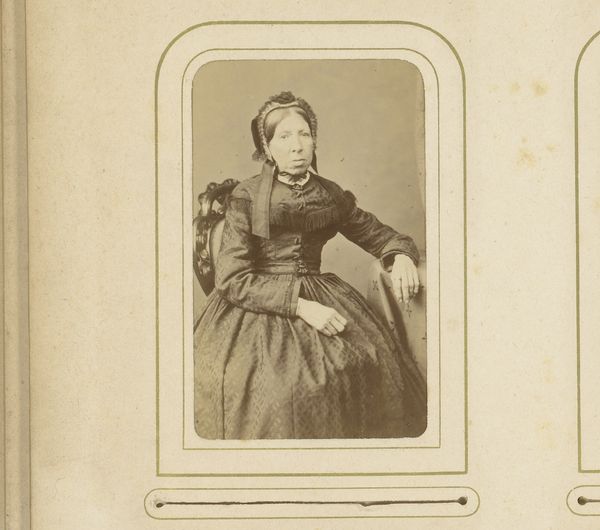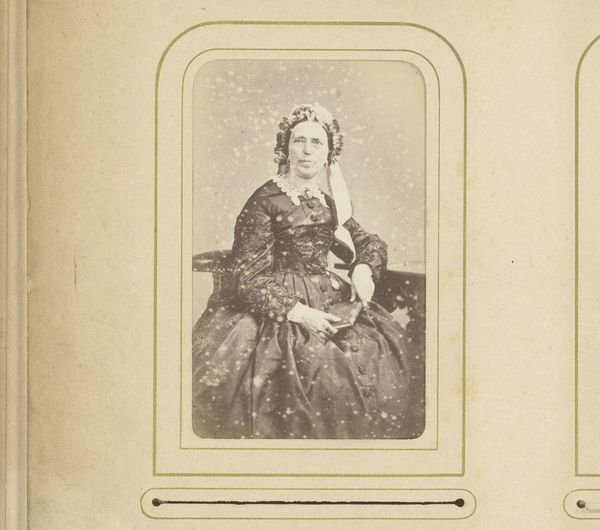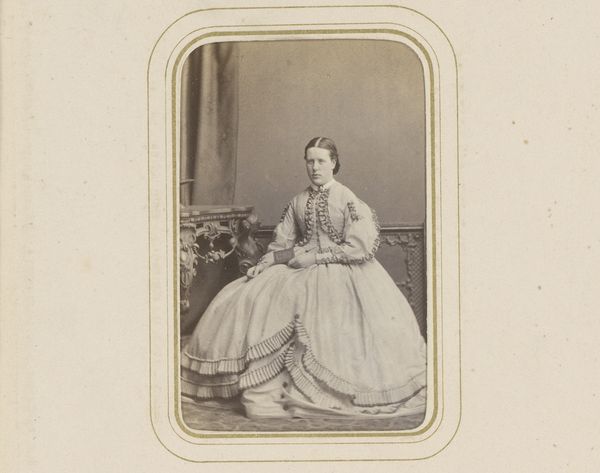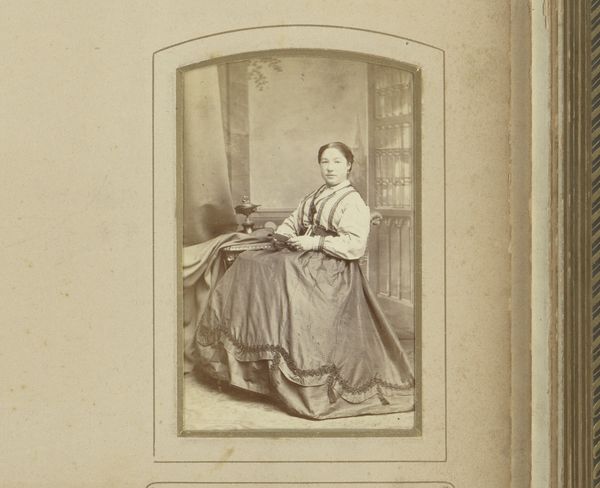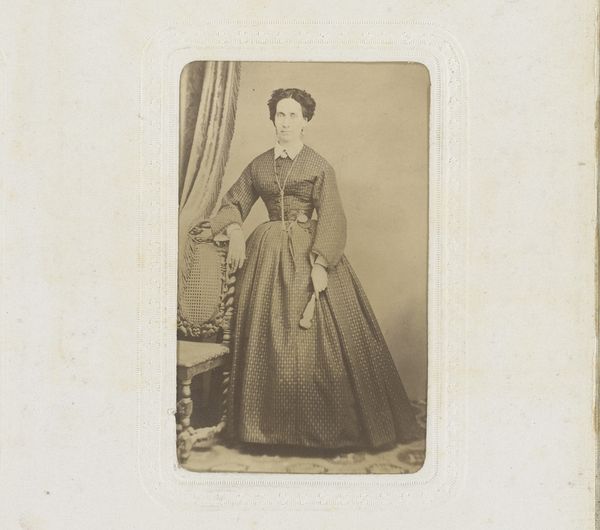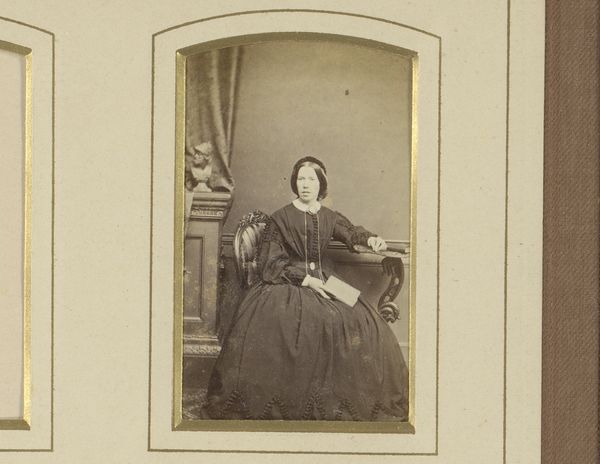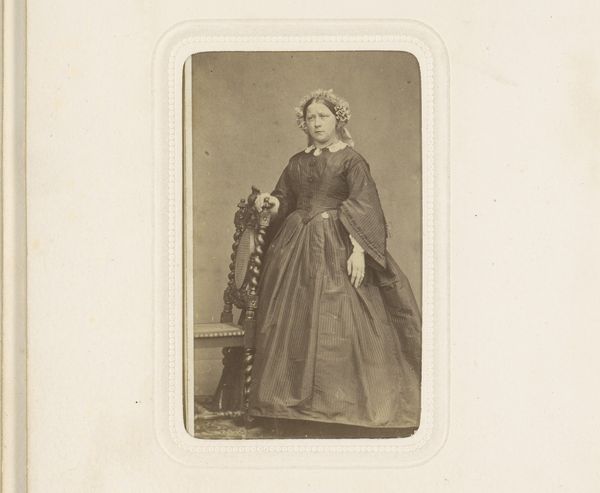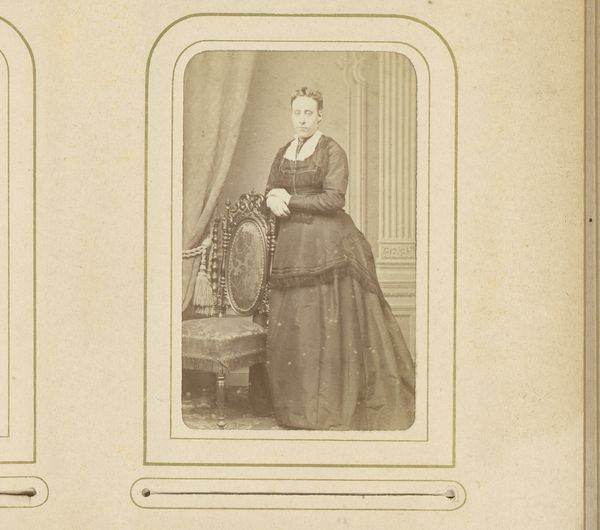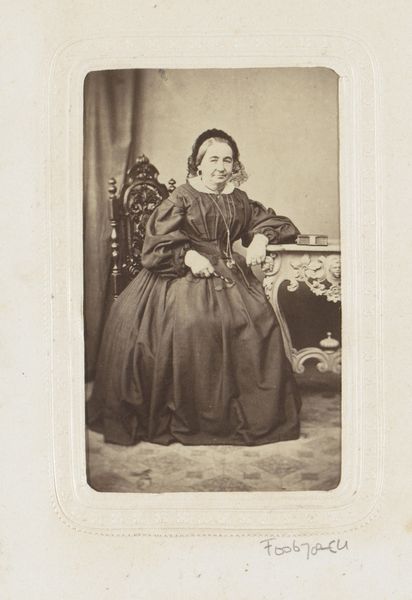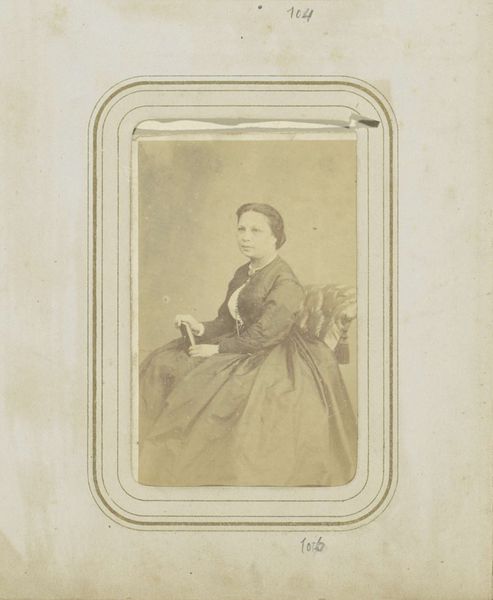
photography
#
portrait
#
photography
#
historical photography
#
19th century
Dimensions: height 83 mm, width 51 mm
Copyright: Rijks Museum: Open Domain
Curator: This photograph is identified as a portrait of Auguste Coquelle Justine, likely taken between 1850 and 1880. It's an albumen print, a popular medium during that era. Editor: There's something undeniably somber about this image. The subject, a woman seated in an elaborate gown, doesn’t quite meet the viewer’s gaze. The dark dress, the enclosed space, all convey a sense of restraint. Curator: Absolutely. Photography in this period was heavily shaped by social conventions. The rigidity of the pose and the subject’s formal attire were not simply aesthetic choices. They mirrored the prevailing ideals of feminine virtue and the importance of social presentation. Editor: But also perhaps reflects the limited technology of the time? One has to wonder about the act of sitting still for so long under those conditions. And that dress—imagine the layers! It makes you consider the performative aspects of being a woman within the confines of the 19th-century upper class. Curator: True. Photography had a transformative impact, both democratizing and further solidifying notions of status. For the bourgeoisie, having one's portrait taken became a signifier of their own accomplishments and position. The carte-de-visite format made images easily distributable, fostering this new culture of visibility. Editor: There is a certain gaze the artists/photographers give to their subject. There seems to be a sense of reverence in the approach, and I wonder to what degree Auguste Coquelle Justine's personality shines through the social requirements of portraiture. How does this single, framed moment fit into the narrative of her life? Curator: And how did Auguste use her images and representation within a time when her images were owned or controlled by her male figures? I can’t say definitively, of course, but perhaps we see clues about this individual's world and selfhood if we dig deeper. Editor: Right. And questioning those social power structures around this image makes me more curious about the photographer too. Who were they, and what perspective did they bring to this process of immortalizing Madame Justine? Curator: Examining that relationship could really provide another entry point, perhaps a starting point for understanding more about the history and ownership during that period. Editor: Yes, exactly! Thinking through these details helps me to recognize this isn't merely an aesthetic representation but one inextricably linked to a specific moment. Thank you for enriching this artwork with your views! Curator: A true and welcome discussion. Thanks for joining in!
Comments
No comments
Be the first to comment and join the conversation on the ultimate creative platform.

